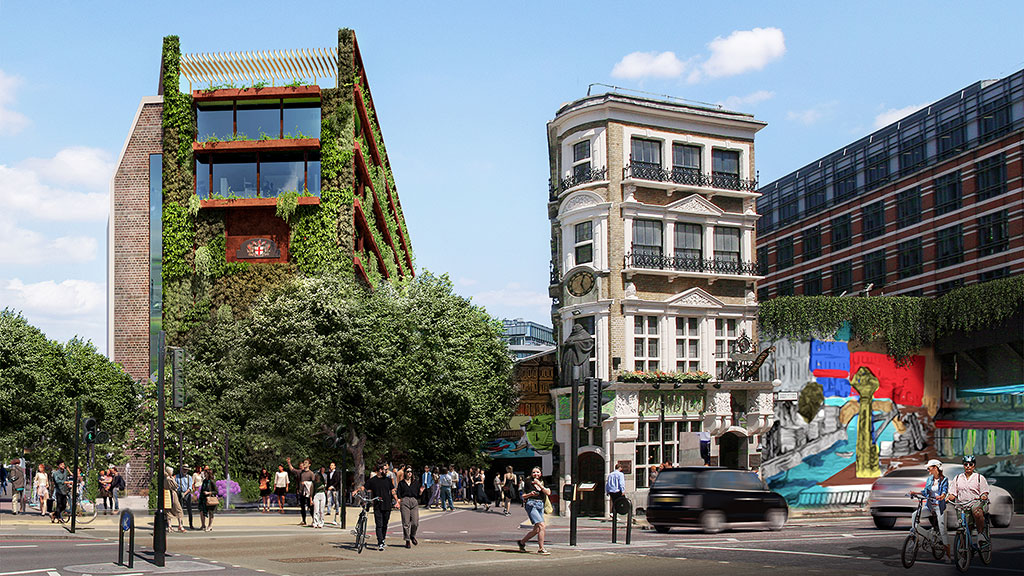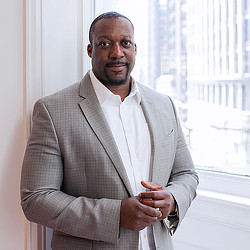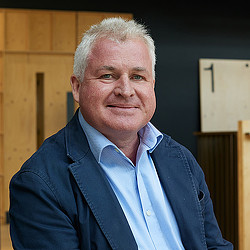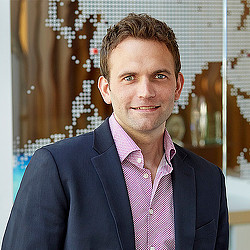Trends to Watch Reshaping the Future of Cities and Urban Living
March 29, 2024 | Q&A with Andre Brumfield, Ian Mulcahey, and Christopher Rzomp
Editor’s Note: This blog is part of our Design Forecast blog series, looking at what’s next in 2024 and beyond. We sat down with Andre Brumfield , Ian Mulcahey, and Chris Rzomp, global leaders of Gensler’s Cities & Urban Design practice, to discuss what’s next for the future of cities.
Many downtowns are struggling in the wake of the pandemic, and clients want to know how to invest effectively. How are you advising them? And how long do you think it will take for cities to fully bounce back from the pandemic?
Andre Brumfield: It’s going to be a process that’s going to unfold for some cities in the next five years, while others may take a decade or generation to do so. Downtowns have died and come back for centuries. In the U.S., that’s certainly been the case and cities have always evolved into something else. We have to accept that our downtowns are going to be something different. They cannot be monochromatic in terms of being dominated by office or commercial development; there has to be a blend of both. The solve is going to be different for different cities.
So, how can cities make downtowns more diverse, and have a different offering that doesn’t rely on traditional office space, and then also expand the hours between 8 a.m. and 5 p.m., where it’s also not just relying on repopulating with a residential population? You have to have institutions and other cultural attractions that are going to continuously get people downtown. I think the biggest question is, how does your downtown survive when you do have emerging districts, that kind of shiny attraction that people and investors are going to run to?
Ian Mulcahey: I think that the era of rigid zonal segregation is over. No longer can a city be simply divided into a series of discrete places: the place where I work, the place where I live, and the place where I want to spend my leisure time. This simplistic planning notion is about to change. People want to live in closer proximity to their work, and they want to be in an area that has theaters, museums, cinemas, shops, restaurants, cafes, and parks. The post-war planning consensus to separate these activities into different parts of the city and then construct complex high-capacity transport infrastructure to continually move the residents twice a day from one zone to the another is at an end.
The future of city planning will drive a more dispersed, nuanced approach to how we plan and manage our real estate. Workers don’t need to be concentrated in one big building in one city anymore. They can be in a number of cities and a number of neighbourhoods, but also in better locations. The flight to quality is very much still the priority, but now a high-quality living and working environment needs to be balanced by the quality of the urban land mix and high-quality urban transport system. The office certainly isn’t dead, and the city center isn’t dead, but is being redefined. The modern worker wants a better balance between their workstyle and lifestyle, and they want more choice, more variety, and much better public realm and open space.
We’re moving away from that notion of a workplace to thinking about how people work. So, in the same way we have been talking about lifestyle, we talk about workstyle, and also about a central business district being a central social district. The CBD becomes the CSD. So, the role of the city center is not just catering to office workers; it’s catering to everyone in the city. It’s a much more inclusive construct, but by default, that makes it a much more interesting place.
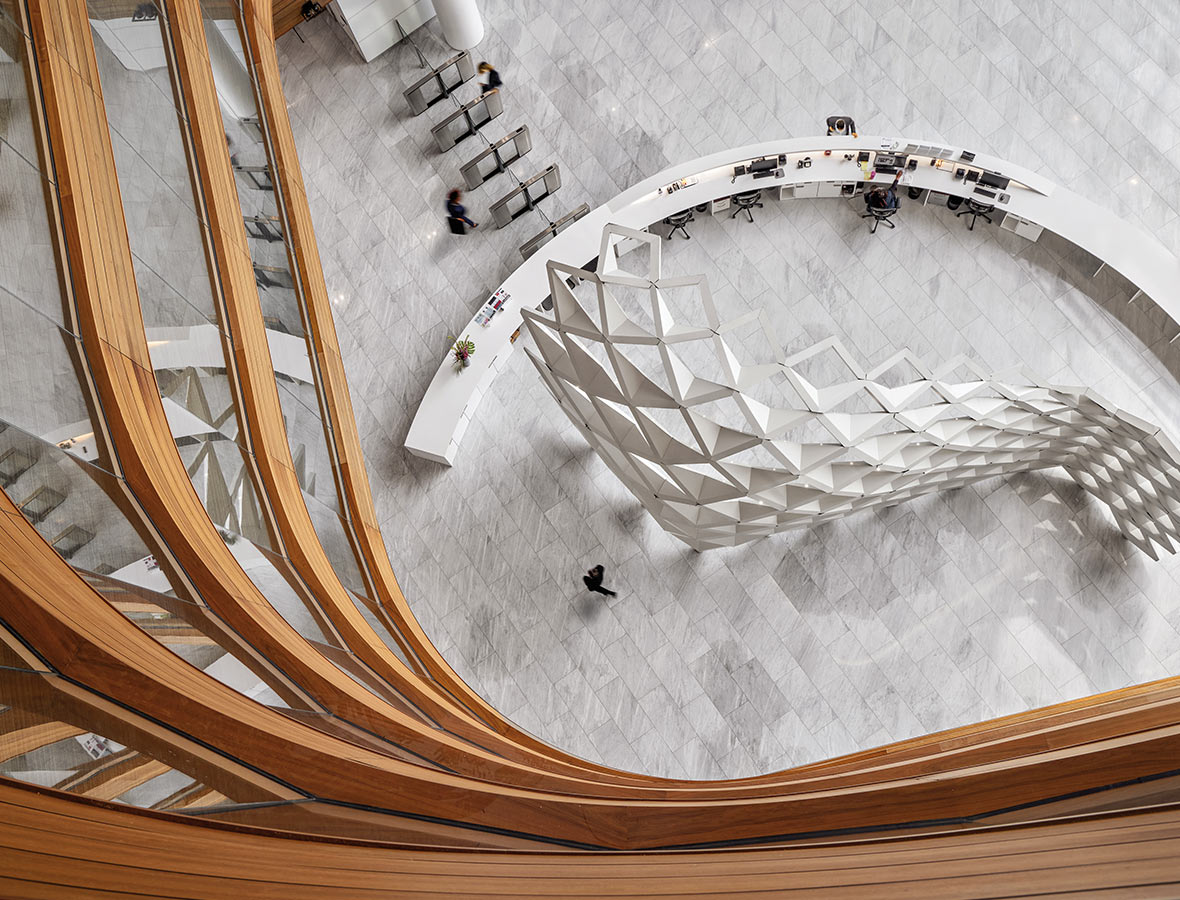
How is the role of the master planner changing? What does a 21st Century approach for comprehensive master planning look like?
Chris Rzomp: The era of the generalist master planner is over. We need to be able to provide comprehensive, specialized services that are very focused on economic development, resilience, and market forces. We need to be able to draw on our internal resources, as well as our external partners, to provide a hyper specialized approach to every project.
Andre: Our practice has to be more flexible now than it ever was. One of the challenges and the opportunities that we have is that there’s no one project that is the same; we have to approach every project differently. We have to be very nimble, and a lot more flexible than we ever have been in our profession in offering the services that our clients need for a particular effort or project.
What’s driving this increased need for flexibility in city planning and design?
Andre: Uncertainty in the current market, as well as future market forces, is driving this need for flexibility. A lot of the work that we do involves the intersection of the public and private sectors, where there are changing policies that we may have to adhere to that might change our approach to a masterplan. There are market conditions that developers who we’re working with are going to have to go through — whether it’s entitlements, or speed to execute an entitlement process that forces us to be more nimble — that go beyond simply designing a project.
Ian: We’ve focused quite a bit over recent months on the repositioning of office buildings, and clearly there’s going to be a lot more of that. But there’s also the repositioning of everything — converting old power stations, factories, and retail centers — this kind of repurposing and repositioning of the city is something very interesting. This also plays into resilience; rather than knocking down and removing an asset, why not reinvent and repurpose it? People can work where they live, and they can live where they used to work.
Andre: Whether you’re decommissioning a coal fired power plant, or a regulatory process for taking down a public housing site, or repurposing an aging piece of infrastructure into something different — it goes beyond just design; it speaks to policy speaks of regulations that we have to adhere to that really influence how we are able to do our work. And that requires expertise, and sometimes involves other practice areas and consultants.
Chris: We recently won this competition for the redevelopment of the Tropicana Field site in St. Petersburg, Florida. It’s a huge urban transformational project, and we’re taking 80 acres surrounding this outdated stadium and creating a mixed-use, multigenerational, multi-income neighborhood. And we are working with the planning department to look at existing zoning and understand how to work within or amend the existing codes to get this implemented.
Ian: In Europe, we’re also seeing that long-standing principles of zoning, planning, regulation, or controls are having to be rethought. The notion of a segregation of uses is giving way to a mix of various uses. And it’s both a product of a pandemic, but also gradual technological change that’s been enabling a different type of behavior. Just 10 or 15 years ago, it was all about what you were going to do with old industrial or port sites. And now, you’re looking at traditional CBDs, exaggerated to some extent by very tightly controlled zoning or planning policies, that are now having to be rethought and reinvented, it’s a very exciting time.
Chris: When these big projects are reinvesting in downtowns with a mixed-use project or development, they really become the catalyst or vehicle for enforcing some of these changes and getting people to rethink about zoning as it’s been written.
Andre: You see places like Minneapolis that have eliminated single family zoning, or cities like Birmingham, Alabama, that have eliminated parking standards. So, we have to be very much tuned into how a city policy is looking to reshape the built environment, and how we could respond to our clients who are looking to do the same.
We’re seeing in Gensler’s City Pulse data that people don’t feel currently that their CBDs are a good place to raise children to start a family. Is there an opportunity to make downtowns more inclusive, more accessible, and more profitable?
Andre: It’s not just a downtown phenomenon. Our cities have gotten a lot more expensive. When people make choices once their kids reach a certain age, they often ask: Do I stay in the city or go to the suburbs? And that is the tipping point for how cities actually lose citizens who have strong tax base, how they lose a consistent population, and that impacts services that we can all benefit from, whether it’s public transportation or other public amenities.
Chris: The polycentric aspect of cities is a trend that’s going to continue. The neighborhood units of our cities are going to continue to get stronger as more people seek that workstyle and stay closer to home. We will start to see these neighborhood centers popping up, growing, and thriving more than they had in the past.
Ian: We’re definitely seeing that in the U.K. If you go into what was the financial center, it’s still very quiet at times, as parts of the city are dominated by people working there 3 or 4 days a week, and then you go into some of the neighborhoods further out in London, and they’re just full of people, and there’s lots going on. Since the pandemic, Saturday is still the busiest day of the week on the metro.
Chris: Open space is also vital in order to reimagine a city’s downtown. People understood the value of open space during the pandemic and being able to have these places outside your buildings where indoor and outdoor space blends. That interconnected and active ground plane throughout downtown is going to become a differentiator.
How can we help solve for affordable and workplace housing, and what are some of the barriers and obstacles to addressing these issues?
Ian: There’s a shortage of housing everywhere, whether it’s in the Middle East or in Europe. Certainly, what we’re seeing in the U.K. is that the more regulatory systems we put in place to force developers to provide a proportion or a quantity of affordable housing within a development, the more that has actually slowed down the rate of overall development, and paradoxically, led to a shortage. So, the market then grinds to a halt because people can’t move and trade up, which means there’s a whole underclass who won’t get any housing. So, encouraging supply, whether publicly or privately provided, is going to come back into the frame again, because that’s really the only way you’re going to make housing more affordable for everyone.
Andre: There are three options to solve for. Either the government is going to step in, through local housing authorities or agencies, or the private sectors are going to be part of the solution, or both. And it varies from country to country and from city to city. These components go beyond what urban designers and planners do, but we know the issues that are slowing down real viable solutions to bring about change.
We have relationships with a number of housing authorities, as well as developers who focus on affordable housing. And I think the opportunity now is to ask, how do we go beyond the regulatory or entitlement process to really bring our design lens, from an architecture standpoint, to make these plans real?
How do cities need to adapt to the realities of climate change?
Chris: We’re looking at how climate change impacts livability in urban areas. There is a certain aspect of climate justice that is almost becoming table stakes in any urban project. And we’re doing a lot of work in Baltimore right now, and especially in the more disinvested neighborhoods, the temperatures can be up to five to seven degrees higher than areas that have dense tree cover, and that effect is disproportionately put on lower income populations. We need to correct that as we move forward within our planning, to keep an eye on the effects that climate change can have on these neighborhoods if we’re not actively making changes there through the public realm.
In terms of mitigation, there are measures we can take. We’re doing some work on Harborplace in Baltimore, and just understanding that, when we’re planning for a public realm for the next 50 years, that it’s going to look very different, so we have to get ahead of that. And it’s about looking at these resilient systems that will be able to change, adapt, and grow with it.
For media inquiries, email .
